When I learned that Kansas City International (MCI) would become the location of a mass airplane storage site, I ignored it. COVID-19 has brought unprecedented and rapid change upon us all. And we are all coping with it differently. For me, rather than accept the fact that my passion has ground to a halt, I have done my best to ignore the bad news while focusing internally on my family and friends.
But history is in the making and after a few weeks of airplane stockpiling I had to go see. I don’t know what I expected. I was excited to visit the airport for the first time in months. But when we drove past the threshold of runway 19L the site was… heartbreaking. Words truly cannot describe the feeling of seeing over a hundred planes in “active storage” lining a once busy runway and taxiway at an airport that has seen consistent and impressive growth over the past few years.
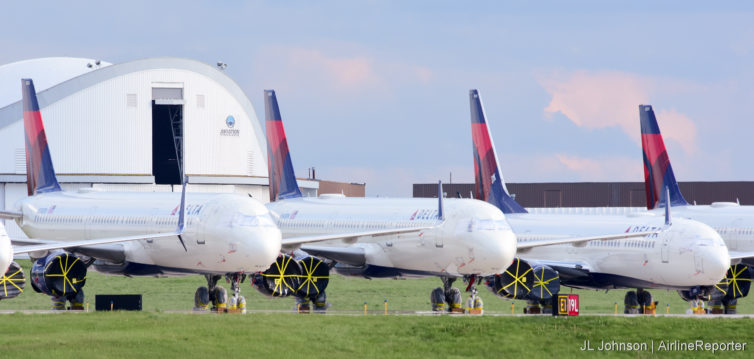
Parked Plane Stats:
I called my good friend Nick Benson, chief AvGeek over at JetTip to see just how many planes have been parked at Kansas City International since the pandemic took hold.
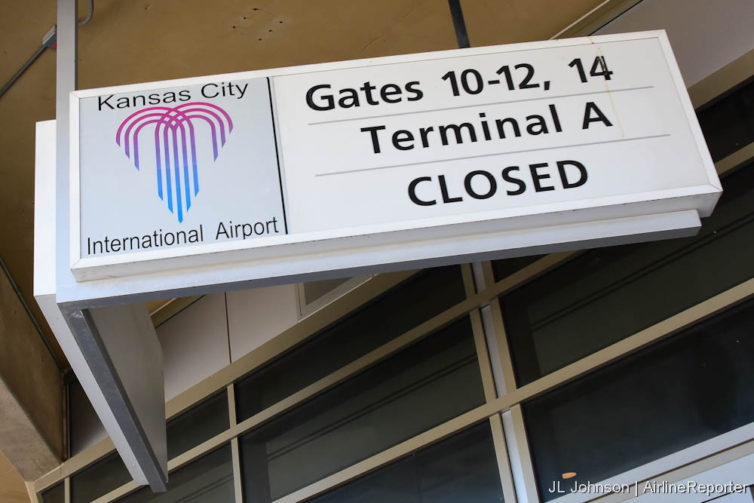
Kansas City International’s Terminal A Has Been Closed since January 8, 2014
Airline consolidation, the move to bigger planes, and trimming of under-performing flights has resulted in less need for gate space in all but a few privileged focus cities and hubs across the United States. Kansas City International Airport (MCI) or as we locals call it, “KCI,” is the 39th-busiest airport in the country and has seen the effects of this first-hand. As airlines began to sunset (we’ll miss you, Braniff, TWA, and Vanguard) and consolidation spread across the industry, it became apparent that it was time to consolidate terminals.
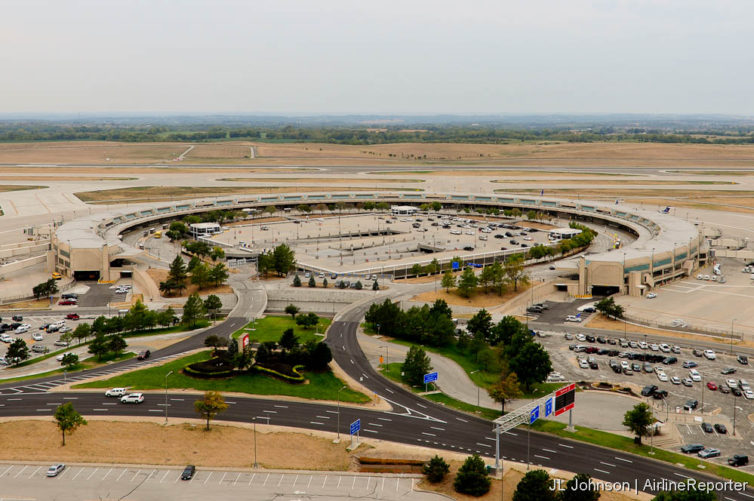
Terminal A seen from the ATC tower in August, 2012
On January 8, 2014, US Airways Flight 1948 departed Kansas City International’s Terminal A for Charlotte. This would be the last regularly scheduled operation out of the 42-year old structure. This was a bittersweet milestone for travelers of all sorts in our two-state metropolitan area, albeit for very different reasons. For those not in the know, our airport is comprised of three thin, horseshoe-shaped terminals. This was a revolutionary design for its day, but has proven a real challenge for airlines, passengers, and airport operations in recent history.
Consolidation aside, moving operations out of Terminal A allowed for clearing space for what many agree is a longer-term solution to ensure Kansas City remains competitive with its local peers: A single, modernized, consolidated terminal. More on that story and the perplexing controversy over this much-needed, PFC-funded infrastructure project some other time.
For nearly four years, this terminal has been out of reach of the public eye while the aviation industry has continued to work through its various consolidations. AirlineReporter was granted rare access to the terminal while awaiting the arrival of the TriStar Experience L-1011 late last month. Join us as we stroll down memory lane…
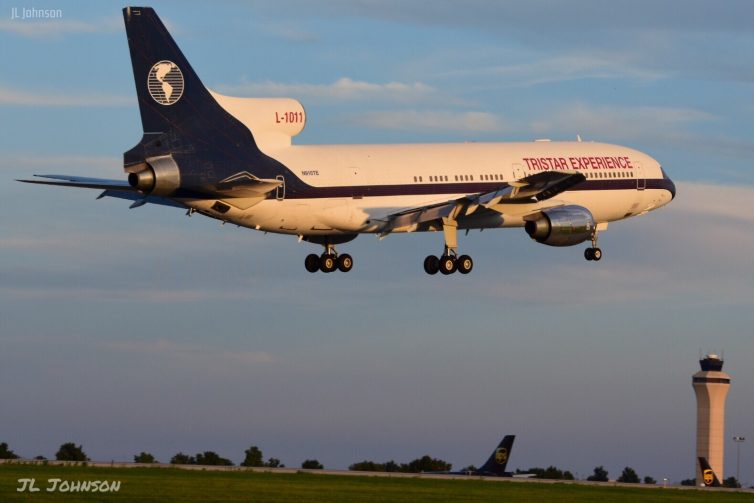
Lockheed L-1011 TriStar does a fly-by of Kansas City International Airport. – Photo: JL Johnson. Not for use elsewhere.
The Lockheed L-1011 TriStar was a plane with a tragically short lifespan. It was expected to be a real contender against the Boeing 747, Douglas DC-10, and Airbus A300. It entered the market late, in large part due to delays resulting from difficulty at Rolls-Royce, the only engine producer for the TriStar. Despite this, it is one of just a few airliners that elicits strong emotion from people of all ages and walks of life. It was received with much fanfare.
In business, however, fanfare does not necessarily equate to economic viability. In roughly two decades, just 250 units were produced – including an incredible number of custom variants. Few operators held onto their L-1011s for long before passing them along to others or sending them to storage. By most accounts, the TriStar was a failure. During development of the only TriStar engine option, the RB211, Rolls-Royce was deemed what modern day observers would call “too big to fail.” It was nationalized to avoid catastrophic economic impact to the United Kingdom and to keep the costly program afloat. Following the cancellation of the series, Lockheed fully withdrew from the commercial airliner market to focus on military and other industries.
But struggles in development, lackluster sales, and frequent turnover did not get in the way of the passion shared by those who had in some way experienced the TriStar. It was and is one of the most beloved planes in AvGeek culture. The TriStar was an underdog. People love an underdog story, and that is just what this is.
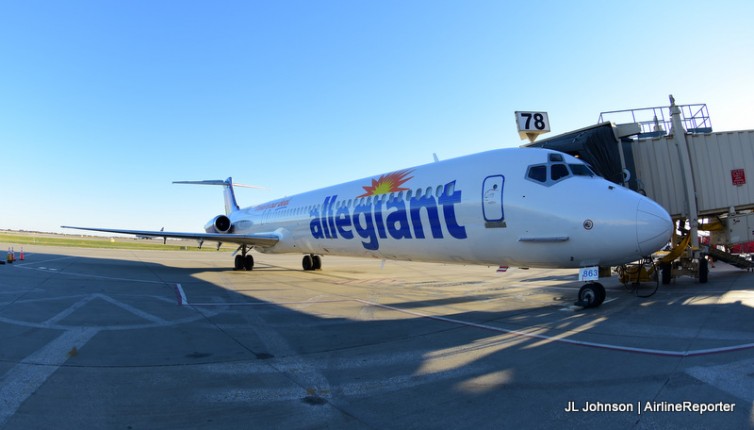
N863GA, a 26-year young MD-83
Earlier this year, I was excited to learn Allegiant would be the newest airline to bring service to my home market here in Kansas City, MO. Allegiant was the last piece of the puzzle to complete the ultra-low-cost carrier (ULCC) trifecta. So, naturally I had to be on their very first flight out.
Just last year Spirit inaugurated services at Kansas City International and in the following months brought with them unprecedented fare disruption across multiple markets. The effects were unlike any I have witnessed in a decade of paying close attention to fare trends in KC. And herein lies the secret with ULCCs; even if passengers never intend to fly with them, they bring normalcy to entire markets with LCCs and even legacies adjusting their own fare structures to keep from losing too much market share.

Inaugural Cake! An A319?
New airline aside, I’m a bit of an inaugural hound. When the day came, I elected to skip the press conference and focus on becoming the first confirmed booking, which I’m proud to announce I accomplished, while the press conference was still going, in fact.
As I tend to do, I booked the outbound leg, making a mental note to fill in the rest of the details “later” – I wound up scrambling to find a way home. When I realized I was one week from my trip with no way home, I went to my preferred carrier who wanted nearly $300 one way. This, in contrast to the mere $82 (fare + exit row + carry-on) I paid Allegiant outbound. Reluctantly, I looked elsewhere and found similar prices. I soon realized what began as a one-way experiment with Allegiant would wind up being a round trip with them out of equal parts laziness, frugality, desperation, and curiosity.
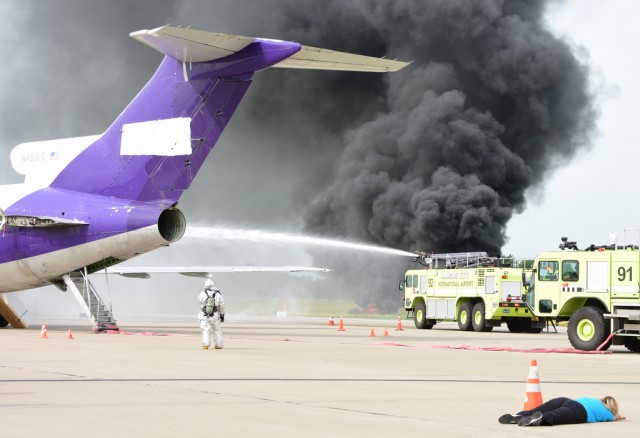
Full-scale disaster drill at Kansas City International, in full swing – Photo: JL Johnson | AirlineReporter
Practice makes perfect. And in the realm of aviation safety drills, it also creates incredible experiences for willing volunteers. Kansas City International Airport (MCI, or KCI as it’s referred to by the locals) recently hosted their triennial emergency exercise, and I was fortunate enough to score a role as a victim. I was told this was a full-scale drill from the beginning, but wasn’t sure exactly what to expect.
The closest I’ve ever been to anything remotely resembling an emergency was on my very first Airbus A320 flight just a few years ago from Minneapolis (MSP) to Pittsburgh (PIT). It was late, and after a typical approach the engines roared and we were on steep climb. Upon leveling off, the Delta captain came on to tell us we had briefly “lost steering.” After a missed approach and a fly-by, we landed uneventfully, were greeted by an ARFF (aircraft rescue and firefighting) escort, and towed to the gate. This experience, plus participating in some rudimentary safety training with Delta during last year’s #InsideDelta event, formed the foundation for my expectations.
I would soon learn I had no idea how disasters really play out, especially on the ground’¦






